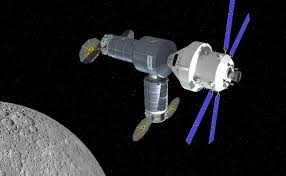
Breaking News
 HERE'S WHAT NO CASH ACTUALLY MEANS (Dave Ramsey re-post)
HERE'S WHAT NO CASH ACTUALLY MEANS (Dave Ramsey re-post)
 The Silver Shift: Why Stackers Are DUMPING 90% Silver & Buying SilverBitz!
The Silver Shift: Why Stackers Are DUMPING 90% Silver & Buying SilverBitz!
 Eye-bouncing - #SolutionsWatch
Eye-bouncing - #SolutionsWatch
 'Targeted, Antisemitism': 16 Dead, 38 Injured After Father & Son Terrorists Attack...
'Targeted, Antisemitism': 16 Dead, 38 Injured After Father & Son Terrorists Attack...
Top Tech News
 This tiny dev board is packed with features for ambitious makers
This tiny dev board is packed with features for ambitious makers
 Scientists Discover Gel to Regrow Tooth Enamel
Scientists Discover Gel to Regrow Tooth Enamel
 Vitamin C and Dandelion Root Killing Cancer Cells -- as Former CDC Director Calls for COVID-19...
Vitamin C and Dandelion Root Killing Cancer Cells -- as Former CDC Director Calls for COVID-19...
 Galactic Brain: US firm plans space-based data centers, power grid to challenge China
Galactic Brain: US firm plans space-based data centers, power grid to challenge China
 A microbial cleanup for glyphosate just earned a patent. Here's why that matters
A microbial cleanup for glyphosate just earned a patent. Here's why that matters
 Japan Breaks Internet Speed Record with 5 Million Times Faster Data Transfer
Japan Breaks Internet Speed Record with 5 Million Times Faster Data Transfer
 Advanced Propulsion Resources Part 1 of 2
Advanced Propulsion Resources Part 1 of 2
 PulsarFusion a forward-thinking UK aerospace company, is pushing the boundaries of space travel...
PulsarFusion a forward-thinking UK aerospace company, is pushing the boundaries of space travel...
 Dinky little laser box throws big-screen entertainment from inches away
Dinky little laser box throws big-screen entertainment from inches away
 'World's first' sodium-ion flashlight shines bright even at -40 ºF
'World's first' sodium-ion flashlight shines bright even at -40 ºF
Orbital ATK proposes lunar orbit habitat

Orbital ATK unveiled a proposal this week for the creation of a four-person lunar orbit habitat which could be sent to the Moon as early as 2020. The outpost would utilize a modified version of the company's Cygnus cargo ship as well as NASA's Orion spacecraft and Space Launch System (SLS) rocket.
This lunar orbit habitat could serve as both a science platform for studying Earth's natural satellite as well as a training base for eventual crewed missions to Mars and the rest of the Solar System.
The plan was revealed on Wednesday, May 18, before the U.S. House of Representatives Subcommittee on Space on Capitol Hill in Washington, D.C., by former NASA astronaut Frank Culbertson, a veteran of three Space Shuttle missions and two stays aboard the International Space Station (ISS). Culbertson is now president of Orbital ATK's Space Systems Group.
Orbital ATK would utilize the flight-proven design of the Cygnus cargo ship to build a lunar orbit habitat. To date, five have successfully delivered cargo to the International Space Station. Photo Credit: NASA
Culbertson outlined the company's future goals for space to the subcommittee: A modified version of the Cygnus cargo carrier would be placed into lunar orbit in 2020. There it would undergo one year of testing in cislunar space. Once the habitat checks out, an initial group of astronauts would be sent to live there in 2021 via an Orion spacecraft; they would become the first humans in the vicinity of the Moon since the Apollo 17 mission in December of 1972.
The habitat would then be expanded upon over the next few years by the delivery of more modified Cygnus modules, carried aloft by NASA's SLS rocket.
Culbertson said having astronauts living and working in lunar orbit during the 2020s would provide both direct experience and technology testing for later crewed missions to Mars in the 2030s.
"A lunar orbit habitat will extend America's leadership in space to the cislunar domain," Culbertson said. "A robust program to build, launch and operate this initial outpost would be built on NASA's and our international partners' experience gained in long-duration human space flight on the International Space Station and would make use of the agency's new Space Launch System and Orion deep-space transportation system."
Orbital ATK was selected by NASA in 2015 to study an initial version of a cislunar habitat that could evolve over time into an expanded research platform with many of the capabilities required for a human mission to Mars. These studies fall under NASA's Next Space Technologies for Exploration Partnerships (NextSTEP) program, a public-private partnership model that seeks commercial development of deep-space exploration capabilities. This model supports more extensive human spaceflight missions in the "proving ground" of cislunar space.
Additionally, NASA, the European Space Agency (ESA), and other international partners could use the evolving outpost as a staging base and safe haven for lunar landing expeditions and robotic surface operations.
"Since many aspects of operations in deep space are as yet untested, confidence must be developed through repeated flights to, and relatively long-duration missions in, cislunar space," Culbertson said. "Orbital ATK continues to operate our Cygnus cargo logistics vehicle as a flagship product, so we are ready to quickly and affordably implement an initial Cygnus-derived habitat in cislunar space within three years of a go-ahead."
Orbital ATK has already developed the Cygnus vessel beyond its initial function as a cargo carrier. The spacecraft is currently serving as a research platform capable of hosting technology risk-reduction demonstrations in Earth orbit for later deep space operations.
The first such technology demonstration is called the Spacecraft Fire Experiment-1 (SAFFIRE-1). Designed by NASA's Glenn Research Center, SAFFIRE-1 is currently aboard the most recent Cygnus currently berthed with the ISS.




